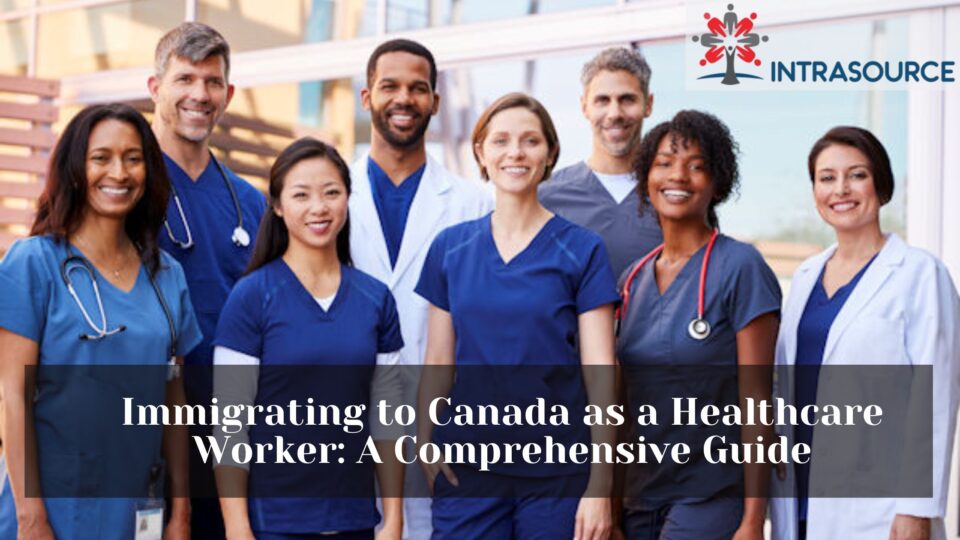In light of the concerning shortage of healthcare professionals, throughout Canada this article aims to give you an understanding of the immigration process for healthcare worker, in this country and how to obtain the credentials to secure employment opportunities.
The Growing Need for Healthcare Worker
In September of 2023, CTV News published an article highlighting the predicament of three teenagers who faced difficulties accessing care at their community hospital, in Clinton, Ontario. The unfortunate situation arose from the closure of the hospitals emergency room. Specifically, the story notes that their local emergency department closed at 6 p.m. that night, forcing them to drive to another hospital 20 kilometres further away for medical care.
As the story continues, it points out that emergency room closures across Canada are expected to continue “because finding people to work there is a key problem.”
Immigration Pathways for Healthcare Worker
Although the above story is just one example, it serves as a potent signal of a growing issue in this country: Canada needs more healthcare worker. Appropriately, the following will provide an overview of some immigration pathways available to foreign nationals looking to work in the healthcare industry across Canada.
-
Express Entry – Category-Based Draws
The federal government introduced Express Entry category-based draws in June 2023 as a means to actively target immigration candidates with specific recent work experience and skill proficiencies for permanent residence in Canada. This year, one of the five occupational target categories is healthcare.
-
Express Entry – Standard
It’s important to mention that these regular Express Entry draws are available, to all immigration candidates not just limited to healthcare professionals.
Speaking of healthcare professional’s individuals who have undergone nursing training may also meet the eligibility criteria, for both the FSWP and the CEC programs.
-
Provincial Nominee Programs
Provinces and territories utilize Provincial Nominee Programs (PNPs) – excluding Quebec and Nunavut – as a mechanism to actively select immigration candidates whom they consider capable of effectively addressing local labor market issues.
Some examples of PNP streams available for healthcare professionals include:
- Ontario’s Human Capital Priorities Stream
- British Columbia’s Healthcare Professional category is available under its Skills Immigration and Express Entry immigration pathways
- Saskatchewan’s International Health Worker EOI pool (nurses)
- Nova Scotia’s Labour Market Priorities Stream
- New Brunswick’s Internationally Educated Nurses (IEN) program
Acquiring Accreditation as a Foreign Healthcare Professional in Canada
For educated nurses (IENs), like myself who want to pursue a healthcare career in Canada it’s really important to obtain the accreditation or license. Different provinces and territories have their procedures, for licensing and accreditation so IENs need to be aware that moving might require steps.
General Steps in the Accreditation Process
While specifics may differ among provinces, the following steps offer an overview of the typical accreditation process for healthcare professionals in Canada:
- Contact the relevant regulatory body: Upon arrival in Canada, get in touch with the regulatory body corresponding to your desired nursing license within your chosen province. A comprehensive list of regulatory bodies for IENs across Canada can be found here.
- Complete a National Nursing Assessment Service (NNAS) assessment: In provinces, the National Nursing Assessment Service (NNAS) mandates that Internationally Educated Nurses (IENs) undergo an evaluation administered by them. This assessment thoroughly assesses the credentials and qualifications of the applicants based on established standards. Once they pass this assessment, they are provided with an Advisory Form that needs to be submitted along with their application to the regulatory body. It’s important to note that Quebec and the three territories have their assessment methods and do not use NNAS.
- Apply to the provincial regulatory body: To proceed with the process you need to apply to the body to your province. After completing the assessment and paying any fees submit your application along, with any required educational programs that may be necessary to fulfill the regional licensing requirements of your intended practice area. Please note that different provinces may have varying requirements, in this regard.


